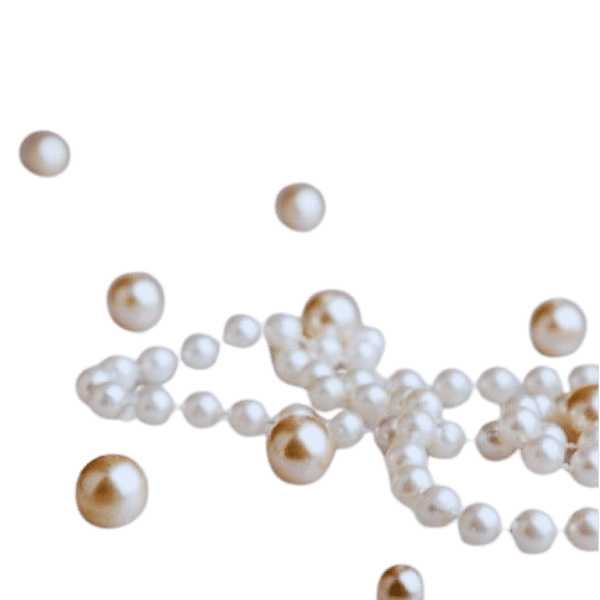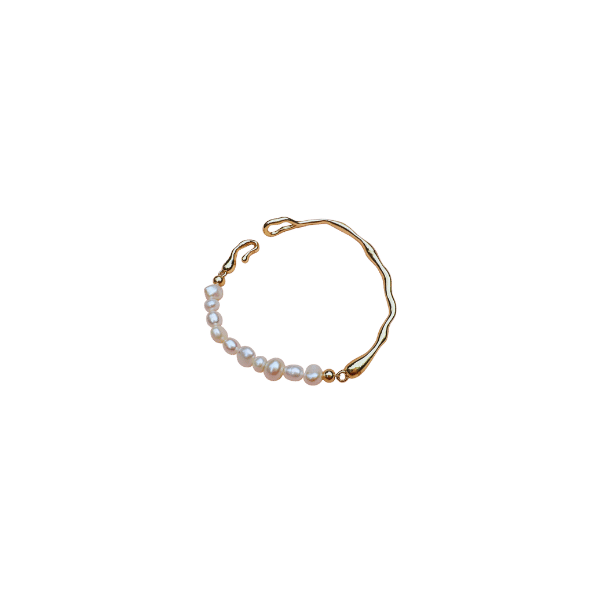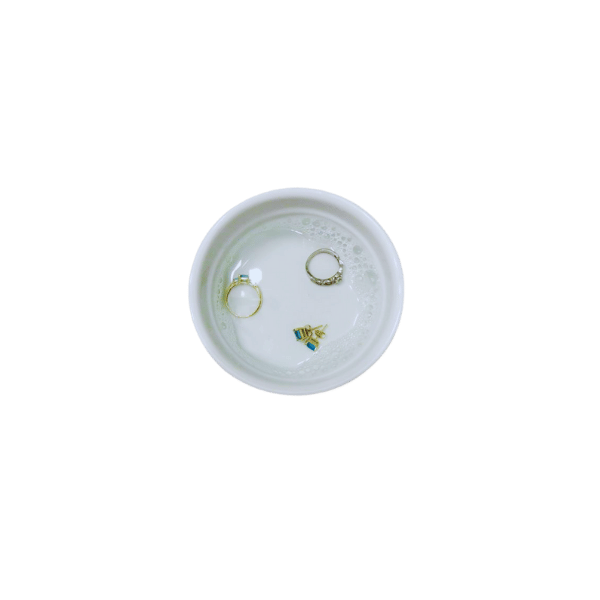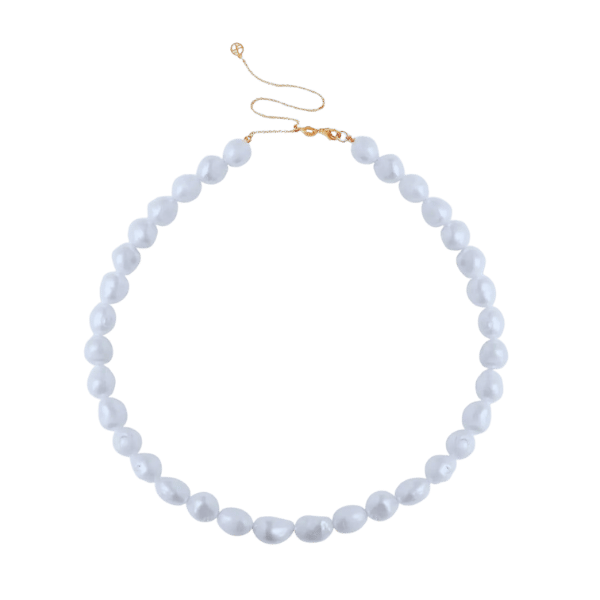The world has always appreciated pearls' permanent beauty, cultural importance, and simple grace. Typically identified as the "jewels of the sea," these stunning gifts bear a significant legacy and contemporary fashion. What is it that leads to such pearl creation is what is to be expanded in this article by discussing their source, how they form, and what unique features of them allow such an honorable position in the culture of the society. A detailed explanation is also provided to those who love wearing jewelry, explaining the cause of its power, or better still, the causes of the obsession or malady of adornment. This guide shows the magical appeal of pearls and the reasons for liking pearls in general.
Where Do Pearls Come From?

Mollusks can sometimes produce one in response to a problem, like a stopped-up oyster clasp or the presence of a parasite. Molded by the oyster and/or mollusk, the formation also includes aesthetic coatings and other materials besides pearls, which are limited kinds of calcium salt layers, proteins, and trace elements. In this case, tiny “builders” of the mother’s pearl perform their wonderful work when they begin to secrete nacre around the nucleus. Period after period, that is, once a year, these layers of nacre develop around the grain of sand or other nucleus, and the pearl is constructed. Freshwater or aquatic shells. They can be found in habitats of different structures, and they can have different sizes, forms, and even different types of surfaces. Cultured pearls today make up the largest proportion of those on the market, which means that such pearls are grown by man by stimulating the formation process of the pearl with a foreign object on purpose.
The Birthplace of a Pearl: Understanding Its Origin
A pearl develops in the soft parts of some sea animals, such as oysters or mussels, when particles irritated by the sea, such as sands or other foreign matter, are nipped in the bud. In order to protect itself, the sea animal will coat the object with several layers of a substance called nacre, which is composed of calcium and a protein. The pearl is formed by these layers when it is obtained. Pearls are also categorized based on their origin, with freshwater pearls coming from rivers or lakes and saltwater pearls from the oceans. Thus, the particular circumstances, such as those associated with the marine environment, significantly determine the ultimate physical properties of the pearl, including dimensions such as size, shape, and value.
The Difference Between Natural Pearls and Cultured Pearls
Cultured pearls are produced with the help of an irritant inserted into a mollusk by human beings, whereas naturally formed pearls are devoid of human involvement.
|
Parameter |
Natural Pearls |
Cultured Pearls |
|---|---|---|
|
Formation |
Natural process |
Human-assisted |
|
Rarity |
Extremely rare |
Common |
|
Cost |
Very high |
Affordable |
|
Nacre Thickness |
Thicker |
Varies |
|
Shape |
Irregular |
More uniform |
|
Origin |
Wild mollusks |
Pearl farms |
|
Environmental |
Depletes wild stock |
Sustainable farming |
|
Identification |
X-ray needed |
Easier to identify |
|
Market Presence |
Antique markets |
Jewelry stores |
|
Durability |
High |
Comparable |
Exploring Pearl Farms: How Are They Produced?
To produce cultured pearls, farmers adopt natural pearl formation methods through a technical approach. Those tanks will carefully prepare the body of a large oyster or mussel for surgery. An operator will then insert a small round implant called a bead or another tissue piece into the animal. The oyster will then, over a course of months and years, secrete layers of aragonite around the foreign implant, leading to the introduction of preferences for pearl formations in the markets. A large amount of liquid biological waste is generated during the culturing of such animals, but this is only part of the total environmental impact, which includes many ecological risks posed by several alternative industries of high culture in water. This process, as you understand, is rather complicated and requires a laboratory. It is carried out in a special area, away from children, animals, and food.
What is the Difference Between Natural and Cultured Pearls?

Cultured Pearl versus Natural Pearl: Key Distinctions
- Formation Process: When a mollusk undergoes an injury, like a grain of sand, for example, getting stuck in the mussel’s tissue, and over time, it is slowly encased in nacre, the process occurs naturally and without any human activities outside. These are consciously created pairs. A bead or some other kind of input is introduced into the mollusk and the nacre around it gets deposited in order to start the pearl developing process.
- Mother of Natural and Cultured Development: Natural pearls are rarely found and are therefore highly sought after. They are costly. Cultured pearls, on the other hand, tend to be cheaper and cost less because they are raised and made artificially.
- Shape and Consistency: The shape of Natural pearls, owing to the fact that they do not depend on any human activity for their development, is usually less defined. In contrast, cultured pearls usually have uniform size and shape patterns because of the controlled culture methods used in their fabrication.
- Price Levels and Their Accessibility: On account of their scarcity and demand, Natural pearls are predominantly purchased at exorbitant prices and are seldom available; they are, for the most part, for collectors. Cultured pearls, however, are easier to acquire and hence they come at a fair price. They are available in standardized form and are therefore usable by almost everyone.
- Marketing Vs Allocated Capacity: Mostly, in this era all types of pearls existing in the market are cultured pearls. This is because there are very few natural pearls being traded almost all the time simply due to the rarity of these stones and the prevailing environmental situation at the collector levels.
- Durability: A natural pearl encased within a mollusk, has its nacre often coated in various degrees whereas cultured pearls appear smoother as it has a younger and therefore a thinner layer of nacre or and depicts comparable thickness, but uniform in appearance, depending on animals treatment and culture conditions.
Understanding the Nacre Layer in Pearl Creation
Mollusks make pearls through the deposition of what is referred to as nacre, and this process results in the final layer, which is colloquially referred to as “mother of pearl”. Nacre is mostly ammonium-based, a component that often consists of organic compounds that provide an analogue of automaterial for organic compounds within the structure of the limestone. All of these shells are very rich luster shells, some more than others. However, the quality and the thickness of the nacre layer are paramount in judging and determining pearls’ gloss, hardness, and ultimately the price at which they will be sold to a consumer. Structurally, tosakiwanians, the synthesis of pearls more or less counts for the overproduction of nacre. It is well known that the number of layers influences the degree of the nacre intensity, the saturation of color, and the inclusion of regrowth and textural correlates in the final size of the pearl.
Why Cultured Pearls Dominate the Market
- Growing Conditions Under Control: The cultured pearls are a composition of the quantity of the pearls grown in a controlled environment which gives the grower the advantage of affecting the quality of water and the health of molluscs – thus obtaining a tried and tested result.
- More Coming Soon: Those of us that have dropped eyebrows understand that there is no keyword results to be observed on the most rare of all shells, however this is not the case with cultivated pearls.
- Quality at Par for All: Managing the growth modifiers of course has its advantage and it is possible to achieve the same very close standards and characteristic shape and the shininess of pearls much closer to the aesthetic capabilities of the end users.
- Value for Money: It is obvious that more and more people can afford cultured pearls as compared to natural as one can embrace commercial scale of farming which ensures that a larger market can be reached.
- Sustainability: Cultured pearls are also environmentally friendly due to the increased demand for ‘going green’ products in a way that their production does not require harvesting because pearls are obtained through the breeding of the organisms that are then deposited.
How Do Freshwater and Saltwater Pearls Differ?

Examining Freshwater Pearls: Traits and Characteristics
- Shape and Size: While saltwater pearls imply a limited number of identical components, such as spherical, spheroidal, baroque, and pear-shaped pearls, freshwater pearls contribute to a great diversity of shapes and forms. Even though freshwater pearls are known to be smaller in size, they can still attain remarkable size differences with techniques like cultured freshwater pearls.
- Luster: It is on record that freshwater pearls have the lowest or least mirror−like luster if compared to saltwater pearls. As a result freshwater pearls posses a rather mute but soft and delicate luster which in most cases is appealing to the eye.
- Color Variety: The range of color of freshwater pearls is wider as it includes the natural colors, the traditional white and silver colors, as well as unusual shades like pink, peach, lavender, and metallic colors that are produced by different species of mollusks and different environmental facrirs.
- Cultivation Method: Freshwater mussels are used for production, which allows the efficient production of many pearls at a time.
- Nacre Composition: Freshwater pearls are dominantly nacreous, which is the main reason why they do not weaken easily and do not develop a chipping or flaking tendency.
- Affordability: Such is the manner in which freshwater pearls are grown commercially and many freshwater pearls are produced at any given time which also vouches for its affordability element, such that freshwater pearls are generally more affordable than saltwater pearls, and that explains why they target all markets they can.
Secrets of the Saltwater Pearl: The Akoya, South Sea, and Tahitian Pearls
- Akoya Pearls: Aside from a perfect rounded shape and a polished mirror-like shine, Akoya pearls are thought to be the smallest. Originating in Japan and China, they are highly recognized for their bright white to cream hue in addition to faint pink or silver iridescence patterns.
- South Sea Pearls: These are some of the biggest natural pearls; their diameters range from 9:20mm. They are grown in Australia, Indonesia, and the Philippines, known for their look and a variety of natural colors, which might even include the golden shades, depending on the collection.
- Tahitian Pearls: Tahitian pearls have the distinction of being colored pearls unlike most other pearls collectively referred to as black pearls. Found only in French Polynesia, they come in colors of green, blue, purple, and some have an element of gray in them with sizes mainly being within 8:15mm.
These facts confirm that all the sea water pearls are different and have adorning characteristics that make them a selection when making high-value jewelry.
What Are the Types and Varieties of Pearls?

Understanding Baroque Pearls and Other Pearl Forms
Baroque pearls showcase odd, uneven, not perfect round shapes and may thus serve as a choice for people who like bold and unusual jewellery designs. While regular round pearls will be round, baroque pearls may come in different shapes and sizes, such as oval, teardrop, or freeform. They can be seen both in freshwater and saltwater types, and due to current popularity and price, most freshwater baroque pearls are easier to find. The fact that they are not perfectly shaped makes these pearls more interesting, as they result in beautiful, unique jewellery items. Other designs of pearls that can attract one's attention include the flat and circular coin pearls, as well as the tiny keshi pearls, where their form is not predetermined. These various forms are designed for the quick-changing taste and kind of art of many jewelry users, whether they are into fashion-conducive dressing or those that are a bit official.
The Colorful Spectrum of Pearl Colors
Cultivated pearls display a full spectrum of colors depending on, but not limited to, mollusk type, water characteristics, and whether the pearl is naturally or artificially colored. Spectra colors contain a variety of white, cream, or grey, which at times might have different hues woven in, including pink, silver, or green. Other colors that are observed in the different types of pearls include black, from the Tahitian oyster, such as peacock or aubergine. The golden pearls of the South Sea Island have particularly favorable and warm coloration. These variations in color make these pearls very versatile and amenable to various tastes and fashions.
Common Types of Pearls in Pearl Jewelry
- Akoya Pearls: Traditionally produced in Japan and China, these pearls are known for their excellent round shape and high shine, and are typically white or cream in color with an undertone of rose, silver or ivory.
- Freshwater Pearls: These are cultured mainly in freshwater bodies and in various shapes and hues such as white, pink, rose, and peach. They are less expensive in most cases and still achieve the desired shine.
- Tahitian Pearls: Another great piece created by the Tahitian black pearl shells found in French Polynesia, these pearls are superb quality black with subtle color overtones, including green, blue, and peacock.
- South Sea Pearls: There are many ofthese pearls available, but the larger ones are always so expensive and rare. The warm waters of Australia, Indonesia, or the Philippines being the countries where this type of pearls are mostly cultivated are characterized by the shades of: white, cream, and golden that look almost silk.
- Keshi Pearls: A type of ‘baroque’ that appears when cultivating pearl-making collected pearls, which are barely round and small in size, but are glossy enough.
- Mabe Pearls: Half orbs, also known as blister pearls, grow forming a half-moon inside of an oyster. Such cultured pearls are popular in making pendants and earrings.
- Cortez Pearls: Also known as pearls from Mexico, these pearls are beautiful, small, rare and originating from the Sea of Cortez in the middle of coral transformation zone.
What Determines Pearl Quality and Value?

The Role of Mother-of-Pearl in Quality Assessment
Nacre quality impacts pearl quality largely because of the nacre's inherent role in gloss, surface smoothness, and so on, in the entire perception of the pearl. As I observed, the extent and uniformity of the nacre deposited by the mother-of-pearl considerably influence the degree and magnitude of the pearl’s luster. The expansion and development of pearls with thicker nacre make it relatively easy to work with such pearls without fear of breakage due to the high intensity of creative techniques. Additionally, for example, distinguished artists often put a layer of smooth transparent colour before images or Hotfix. In addition to the previously mentioned points, I also appreciate the degree of hard texture as a very important quality scale, whether kept as French, Studs, or Postage Stamp Earrings.
How Pearl Sizes Affect Their Appeal
The size of the pearl has a major effect on its appeal as well as its value. The general tendency is that the larger the pearls, the more they are carved because of their rarity and visual appearance. They usually find a place in any sort of ornament, making them a preference. On the other hand, such ornaments can also be used with the smaller ones, which are also sought after due to their small slenderness. The measurement of a pearl's size is in millimeters, and the market has a range of prices depending on the size of the pearl, even in millimeter differences. At this stage, one will be required to decide the size of the pearl in relation to one’s taste and the occasion on which the jewelry is going to be worn.
Judging Pearl Quality: Luster, Surface, and Shape
- Luster: Described here is the surface of the pearl and the way the pearl reflects light displaying a sparkly characteristic. The pearls and the people also clean themselves of high quality any with all clean slope with bright shiny reflections which is an indication of a higher nacre level.
- Surface Cleanliness: Pearls that have few defects such as spots, cracks, or pits are preferred when the pearl is of higher quality as a smooth surface characterizes its appealing appearance.
- Shape: The most valuable pearls are perfectly round pearls, even though they are the rarest. The baroque and the oval are acceptable because they are unlike any other.
- Color: There are various other colors pearls come in apart from white, black, pink or golden. The hue of a pearl also depends on preference, market tendency and on the consistency and intensity of the hue.
- Matching: When there are two or more pearls in a type of jewelry, how they line with one another is crucial to size, surface and its perfect condition as well. A perfectly matching set of pearls contributes significantly to the quality and beauty of the article.
Frequently Asked Questions (FAQs)
Q: How can Pearls be created in nature?
A: Oysters, mussels, or any other bivalves have this neat trick of sequestering unwanted items, like small insects, promptly whenever they get inside the bivalve shells or, in most cases, when they are found in the body of the mollusk. These envelopes are known as nacreous layers, and over time, rubs and wear against the worm create a pearl. This process can continue for several years, and some pearls are kept either in the salt sea or the fresh sea.
Q: What is the difference between cultivated and genuine pearls?
A: While created without human interference, natural pearls occur every now and then. Cultured pearls begin in the same way as natural ones, with a mollusk, but then, an irritant is deliberately placed by a pearl diver into the mollusk, so it generates a pearl. As a result, pearls such as akoya cultured pearls are more common due to the foreseeable and controlled nature of pearl production.
Q: How can a pearl wearer differentiate between real and fake pearls?
A: It is possible to evaluate if a pearl is genuine or not by the features it provides, such as shine, surface and texture reasons, and heaviness as such the use of comparative issues would be evident. For example, real pearls, whether they are culture or natural, are shiny and slightly coarse to touch the teeth. Compared to imitation pearls, however, they do not have a gritty and obnoxious texture but are instead smooth and light as air.
Q: What are the most common types of pearls?
A: Among the popular types of pearls are akoyas, freshwater, tahitians, and South Sea pearls. Each type is distinguishable by its distinct color, vast size, and unique luster, contributing to an impressive collection of such adornments for various fashion accessories.
Q: What are imitation pearls, and where are they produced?
A: Imitation pearls are very pretty and appear real, but they are not because they are just made of other materials such as glass, plastic or shell with the exterior of real pearls. They are excluded in the cost of manufacture and often used in fashion jewelry unlike the real pearls. Such technique is rather cheap and involves creating a bead in which the nacre imitation is coated in pearl to make it look real.
Q: How does the type of pearl’s shape influence the price value?
A: The shape of a pearl is also a significant factor in evaluating pearls in terms of value. Spherical pearls are more sought after and often used in sets like a pearl necklace or a pearl string. Pearls of other shapes, such as baroque or elliptical, can also be expensive depending on the style, size, and general look.
Q: How is mother-of-pearl different from pearls, and what is it?
A: Mother-of-pearl is the shiny lining found in the shells of certain mollusks, especially oysters and abalones. It is the same material used to produce nacreous pearls. While nacre and mother-of-pearl have the same shimmering, glowing look, mother-of-pearl is more often used as accessories made of it or set in ornaments, as compared to pearls, which are more often determined as precious stones.
Q: Are there such things as black pearls?
A: Indeed, there are genuine black pearls. These are most commonly formed inside black lip shells found in the ocean surrounding Tahiti and several other islands in French Polynesia. They are famous for their nearly black, deep color, and are in high demand in the gem business.
Q: How has using production techniques for cultivating pearls affected the scale of production activities worldwide?
A: By developing advanced pearl farming techniques, the cultured pearl industry contributed significantly to increasing the global number of pearls and their distribution. Such processes that originated in the early 20th century allowed for a consistent and high-quality yield of pearl production, resulting in broader availability with various pearl types, such as cultured akoya and freshwater pearls.
Q: In what way are pearls most typically incorporated into jewelry?
A: Pearls are quite often used in a variety of jewellery, including necklaces, bracelets, earrings, and rings. They are also a wonderful complement to other precious stones, such as diamonds, to create beautiful, sophisticated sets that are well focused on the brilliance of diamonds and the softness of pearls.





